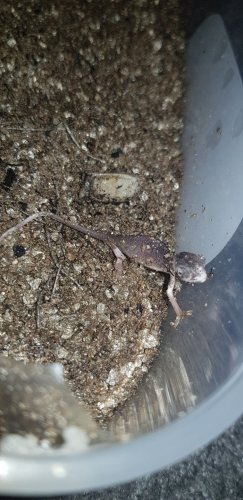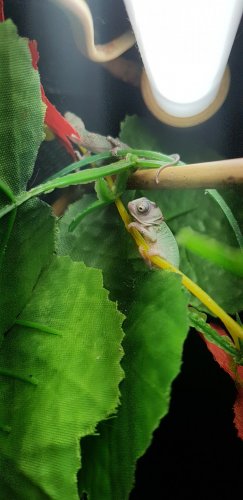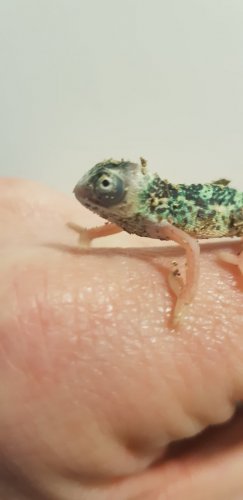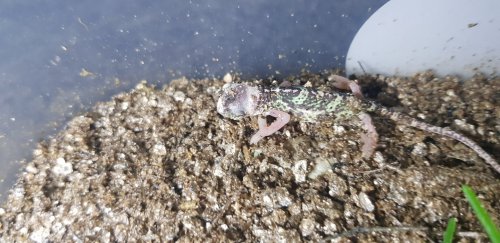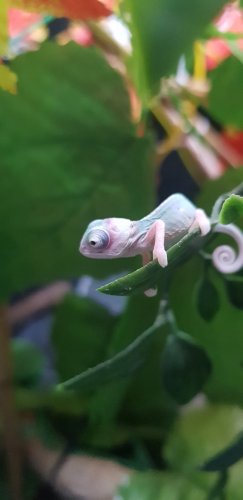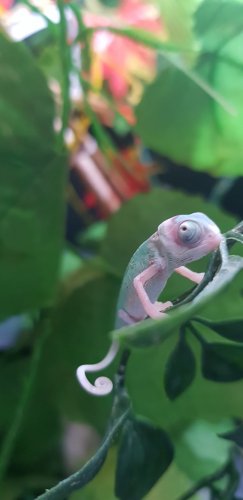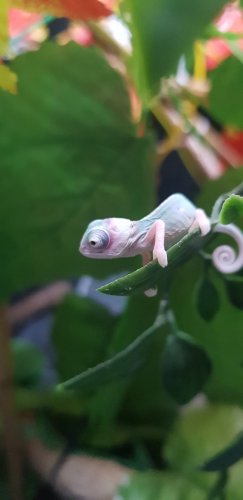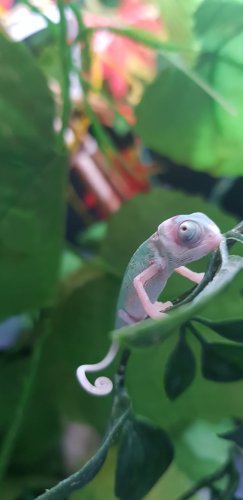Navigation
Install the app
How to install the app on iOS
Follow along with the video below to see how to install our site as a web app on your home screen.
Note: This feature may not be available in some browsers.
More options
You are using an out of date browser. It may not display this or other websites correctly.
You should upgrade or use an alternative browser.
You should upgrade or use an alternative browser.
Veiled/ yemen chameleon id help
- Thread starter nickyal
- Start date
From what I can see they would be translucent, but they are very small. They come in low and high versions.
Ok thanks. Is there a difference in pieds and translucent as i cant seem to find much about them
I have seen people say that pied have black markings, but I dont know.
@Chris Anderson ???
Syreptyon
Chameleon Enthusiast
I think... And I could be wrong here, but I think that there is a semantic difference between "piebald" and "translucent." My understanding is that the translucent gene is more specific than piebaldism. Translucent veileds typically have their off-color markings localized to the head and limbs, whereas true piebald animals show the color mutation throughout their body and not just in specific areas. I also seem to recall that piebald animals result from recessive mutations, whereas translucency in veileds is a co-dominant allele or something like that... I'm at work or I'd fact check myself, but take that with a grain of salt
Chameleomom
Chameleon Enthusiast
Whatever they are ....they are soooo cute
I think... And I could be wrong here, but I think that there is a semantic difference between "piebald" and "translucent." My understanding is that the translucent gene is more specific than piebaldism. Translucent veileds typically have their off-color markings localized to the head and limbs, whereas true piebald animals show the color mutation throughout their body and not just in specific areas. I also seem to recall that piebald animals result from recessive mutations, whereas translucency in veileds is a co-dominant allele or something like that... I'm at work or I'd fact check myself, but take that with a grain of salt
So I think you are correct, except I think this is still a recessive gene. I don't think that there are any actual pied chameleons, but I could be wrong. I have seen translucent veileds labeled as piebald, but I don't think this is accurate.
Ok thanks. So what would you say the ones in pics are
I would say they are High Translucent, but again, I'm not an expert
bobbydigital
Avid Member
On flchams, low color tranaluscent veilds go for $100 and high color translucent are $200
Chris Anderson
Dr. House of Chameleons
Pied and translucent have both been used to describe this trait. They are referring to the same thing in Veiled Chameleons. With regard to the inheritance of this trait, it is not completely understood, but in general it does appear to be a codominant trait. It is possible, however, that it is actually multiple, possibly linked, traits, which would explain why there is some suggestion that a simple Normal, Low-expression (heterozygous translucent), High-expression (homozygous translucent) dichotomy is not shown, but that crosses between high-expression animals can yield results aside from 100% high-expression equivalent to the parents.
Chris
Chris
Similar threads
- Replies
- 29
- Views
- 5K
- Replies
- 8
- Views
- 456

